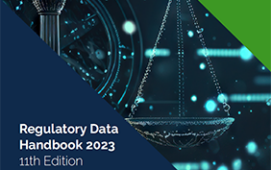
In today’s fast-paced financial markets, institutions face a number of challenges. As well as having to cope with shrinking margins and ever-increasing regulatory scrutiny, firms are having to process more data from more sources than ever before, all in an increasingly competitive landscape.
With everything moving so fast and changing so often, financial institutions are heavily reliant upon the technology that supports their trading activities. All too often however, the legacy systems that they use are heavily siloed, either by asset class or by business function (or both). And despite the promise of many of these technologies to improve efficiency, in reality they often end up creating yet more complexity. The result? Inefficient and convoluted workflows.Modernisation is the key to addressing these challenges.
What do we mean by modernisation?
“Modernisation in the front office world is really about automation and digitalisation,” says Justin Llewellyn-Jones, Head of Capital Markets, North America (Equities, FX & Derivatives) at Broadridge Financial Solutions. “If you can start interrogating some of the existing workflows and combining them, moving from a high touch to a low touch workflow, you can gain tremendous efficiencies. But when modernising, it’s not enough to just improve the technology, you’ve also got to simplify things and eradicate complexity, by consolidating things from both a back-end and a front-end perspective. That modernisation and simplification is what then drives efficiency.”
The three key aspects of modernisation are modularity, interoperability and automation, all of which can be achieved by adopting a component-based infrastructure. Modularity can vastly reduce maintenance overheads by allowing specific components to be upgraded as and when necessary, rather than upgrading an entire monolithic system. Interoperability enables multiple technology components to talk to each other seamlessly. And automation can greatly enhance inefficient workflows.
A component-based architecture, together with a strong level of interoperability, should not only be seamless to the end-user, it should also facilitate an agile methodology, and foster a mindset of continuous integration and continuous delivery, where changes can be rolled out in days or weeks, versus an older, more waterfall approach where updates are delivered maybe once every few months. And in financial markets, where firms tweak algos and other components literally intraday, the idea of waiting months for releases is nonsensical.
Why evolutive technology is critical
When modernising, firms can take an evolutive approach to technology by building only in areas where they are differentiated, and buying or outsourcing everything else.
This means identifying non-differentiating activities, and outsourcing the technology for those activities to vendors whose product roadmaps include modernisation and automation. Then, in order to achieve the best possible ROI, firms can pivot their resources towards the areas where they truly are differentiated. Taking such an approach allows organisations to leverage baseline functionality from those providers and integrate it with their own differentiated services.
In order to achieve full interoperability when taking this kind of modular approach, a key step is to ensure that each component is wrapped within an API framework. Not only does this enable those components to share data and talk to each other, so that silos are collapsed and fully optimised multi-market, multi-asset workflows can be built, but also to facilitate better interaction with clients and other third parties.
“Interoperability doesn’t just mean server-to-server, it’s also about the user experience,” says Llewelyn-Jones. “Futures traders and equities traders for example have different end-user requirements, so in a multi-asset environment, you have to be very UX focused when you’re bringing those two personas together and putting them into a single pane of glass, one that is intuitive and easy to interact with.”
How the right technology partner can help
When modernising, firms need to work with technology partners that are well-positioned to help them solve their technology challenges through modularity, interoperability and automation, ones that can offer scale, flexibility, expertise, integration and configurability.
One such technology vendor is Broadridge/Itiviti, which has a proven history of consolidating and integrating distinct, powerful functionalities from diverse platforms. And just as their expertise in lateral integration has helped accelerate the shift to multi-asset trading, the combined Broadridge and Itiviti now offers a huge potential to capital markets participants to unlock workflow efficiencies and optimise their trading, clearing and settlement processes.
In conclusion, by working with the right technology partner, taking a modular, component-based approach, and adopting a tech stack that is adaptable, flexible and interoperable, firms can address the challenges of today’s fast-paced markets by streamlining their workflows not just across markets and asset classes, but also through the entire trade lifecycle.
Subscribe to our newsletter




